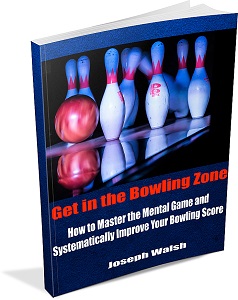The approach is crucial to a bowling shot, and there are a few different variations on the footwork. They are referred to, rather intuitively, by the number of steps taken by the bowler as he or she prepares to throw the ball. There is the 4 step approach, the 5 step, and even a 3 step. Also, some senior or disabled bowlers even undertake a no step approach and simply stand at the foul line and release.
The four step approach is the standard and the most popular among bowlers. It’s so common because it has a very natural rhythm to it. Each one of the four steps corresponds to a particular motion in the swing.
The first step, for example, should be in sync with the pushaway, the second with the downswing, the third with the highest point of your backswing, and the fourth with your release.
This easy-to-remember synchronization makes the 4 step approach the preferred one for beginners as well as many intermediate and advanced bowlers. But the other approach types offer their own advantages, and might be worth a try.
5 Step Approach
The main difference of the five step approach is the fact that you’ll take an extra step at the start. Also, you will make the first stop with the opposite foot as he or she would with the 4 step approach. An advantage of this technique is that the longer approach, you can roll with more power at the release.
The 5 step approach, however, is more difficult for some because the different steps do not neatly correspond to a part of the armswing as is the case with the 4 step. Because of this, the 5 step approach is used mostly by advanced bowlers, but it does hold some popularity among them. Some bowlers feel that the 4 step is too mechanical, and that a 5 step feels more natural.
3-Step Approach
In addition to the 4 step and 5 step approaches, by far the two most common, there are a couple others that are used by some bowlers. Some find success using a 3 step approach, which requires a few readjustments.
The first step of the 3 step approach is about the same as the second step of a 4 step approach. In order to make it work, you will need to start with the ball out in front of you, as if you had already completed the pushaway. It is also necessary to stand closer to the foul line, as you will only be making three steps. The 3-step approach is much less common, especially among more experienced bowlers, and is usually used by bowlers who do not feel coordinated enough with the 4 step approach.
All in all, although there are a few advantages of both the 3-step and 5-step approach, the 4-step is still much more popular among bowlers for its rhythmic nature. Most beginning and intermediate bowlers should use it unless they have particular special preferences.


Leave a Reply